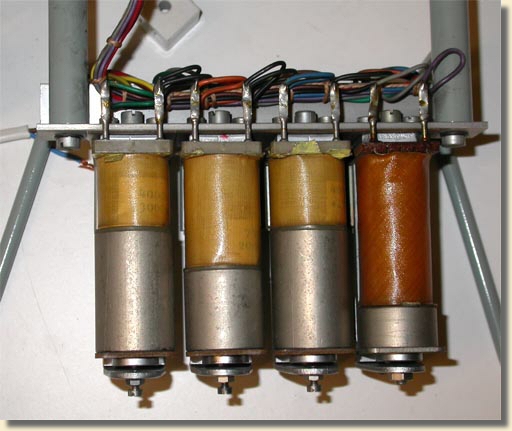
ECS Impulse Converter
The electrically impulsed clocking in clocks supplied by ECS had high resistance coils requiring a pulse of 36 volts once every minute. This is different from the standard slave dials which had low resistance coils, were impulsed every 30 seconds, and were set up by the current flowing in the circuit, not the voltage. Therefore, the clocking in clocks could not be simply added to the slave dial circuit.
There were two ways to generate the required 36 volt, one-minute pulse.
- Firstly, where a master clock system was not already in place, a device called a Synchronator was used (click on Synchronator on the left for details).
- Secondly, where a master clock was in place, an impulse converter could be connected in the normal slave circuit of a master clock .
|
|
|
An impulse converter consists of four relays. One has a low resistance coil and is connected in the series half-minute slave circuit running at 320mA. The other three latch on, and release, each half minute, ultimately switching a separate 36 volt DC supply to give a pulse each minute. An ECS impulse converter has not yet been found, but a company called Telephone Rentals used a similar device with an almost identical circuit design. The picture above is of a Telephone Rentals unit. |

